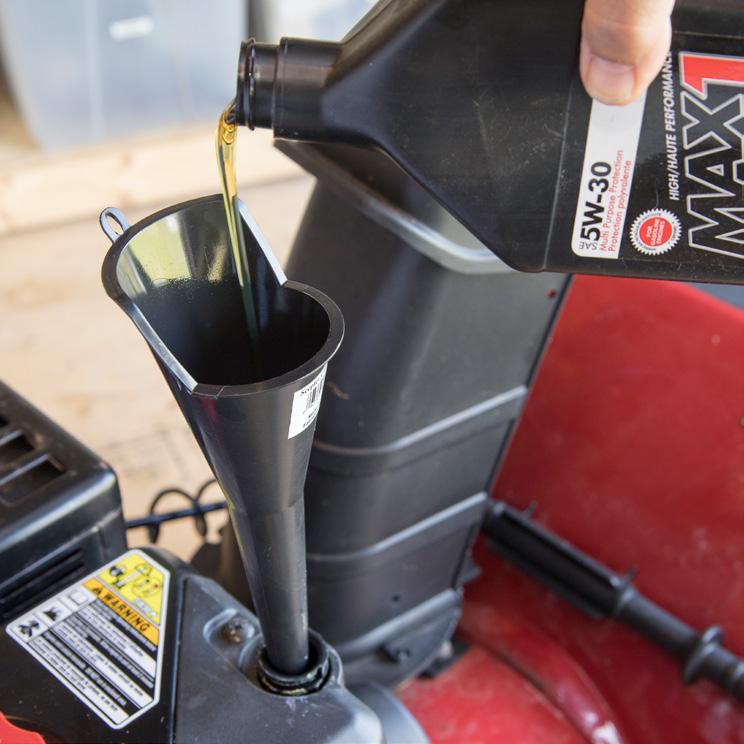
2 minute read
DIY: Snowblower maintenance
Get your snowblower ready for winter
1

2

3

Look for evidence of rodent damage. Check and change the oil (if necessary). Test the spark plug.
Be prepared when the snow flies
BY PHILIP MOSCOVITCH PHOTOS BY BRUCE MURRAY/VISIONFIRE
The key to having a snowblower that starts right up in winter is to have stored it properly in spring. That and checking for rodents. “Rodents love to build nests in the boxes of snowblowers” says Peter Keddy of Bay Equipment Rentals in Upper Tantallon, N.S. “I could show you pictures that would absolutely blow your mind. We crack them open and—here’s your problem bud.”
Deryl Peters, manager at Dave’s Snowmobile Repair in Warren Grove, P.E.I., also sees rodent nests in snowblowers, but says a much more common problem is moisture in fuel.
“Old gas is the biggest problem we see. Untreated fuel,” he says. When he’s looking at a snowmobile that won’t start, “Nine times out of 10 we find water in the fuel system: moisture and condensation.”
Over time, fuel draws moisture, and it doesn’t take much to bring your snowblower to a stop. A drop of moisture in the carburetor bowl will do it, Keddy says. “Moisture collects in that bowl, which basically turns into water droplets. And a single water droplet will cause it to stop running. With the heat and humidity we’re having right now, metal sweats and that moisture gets into the fuel.”
The best way to avoid this problem? Store your snowblower with premium gas and use enough stabilizer. Premium fuel is higher in octane, burns at a lower temperature (which is easier on the engine) and it doesn’t contain ethanol, which attracts more moisture.
Peters says even if you run the snowblower to empty before storing it, you still need stabilizer, because “there is still fuel in the system. Your fuel line and carburetor still have gas in them.” He adds that an alternative is the canned fuel some high-end manufacturers make, which has a two-to-three-year shelf life.
Keddy says snowblowers are pretty “basic” and that you may be able to fix simple problems on your own. “The first step I always tell everybody is bleed the carburetor and make sure there’s no water in it. Second step, change the sparkplug. Now, if you’ve got a new sparkplug and fresh fuel and it still doesn’t go, then you have to start digging.”
If you did store your snowblower properly and it starts up, congratulations! There are still a few checks you should do before the snow flies though. Peters says, “Change the oil, check your drive system, check your belts [to make sure they are not dried, cracked, or excessively worn], check all your bushings and cables, and make sure you’re good to go.”
And one more thing: “You should definitely pull the covers and inspect to make sure there’s no rodents that have taken up occupancy,” Peters says. o




